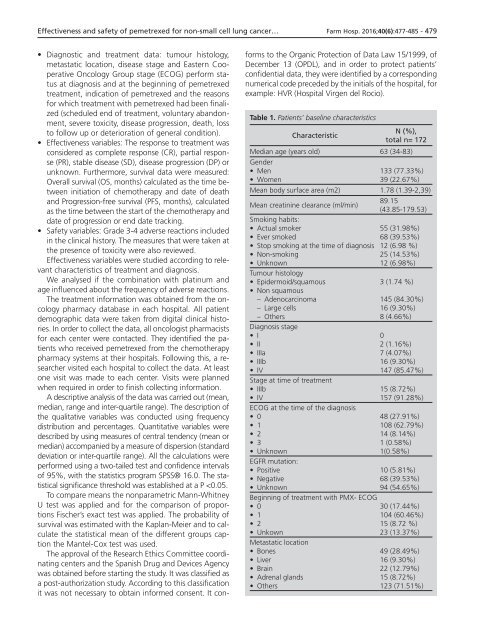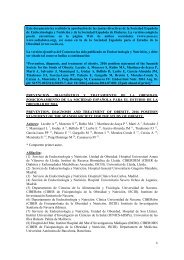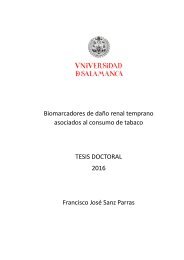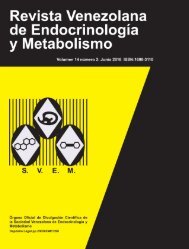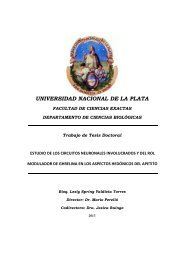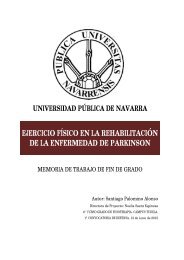Noviembre-Diciembre
156_v40n6(1)
156_v40n6(1)
You also want an ePaper? Increase the reach of your titles
YUMPU automatically turns print PDFs into web optimized ePapers that Google loves.
Effectiveness and safety of pemetrexed for non-small cell lung cancer… Farm Hosp. 2016;40(6):477-485 - 479<br />
• Diagnostic and treatment data: tumour histology,<br />
metastatic location, disease stage and Eastern Cooperative<br />
Oncology Group stage (ECOG) perform status<br />
at diagnosis and at the beginning of pemetrexed<br />
treatment, indication of pemetrexed and the reasons<br />
for which treatment with pemetrexed had been finalized<br />
(scheduled end of treatment, voluntary abandonment,<br />
severe toxicity, disease progression, death, loss<br />
to follow up or deterioration of general condition).<br />
• Effectiveness variables: The response to treatment was<br />
considered as complete response (CR), partial response<br />
(PR), stable disease (SD), disease progression (DP) or<br />
unknown. Furthermore, survival data were measured:<br />
Overall survival (OS, months) calculated as the time between<br />
initiation of chemotherapy and date of death<br />
and Progression-free survival (PFS, months), calculated<br />
as the time between the start of the chemotherapy and<br />
date of progression or end date tracking.<br />
• Safety variables: Grade 3-4 adverse reactions included<br />
in the clinical history. The measures that were taken at<br />
the presence of toxicity were also reviewed.<br />
Effectiveness variables were studied according to relevant<br />
characteristics of treatment and diagnosis.<br />
We analysed if the combination with platinum and<br />
age influenced about the frequency of adverse reactions.<br />
The treatment information was obtained from the oncology<br />
pharmacy database in each hospital. All patient<br />
demographic data were taken from digital clinical histories.<br />
In order to collect the data, all oncologist pharmacists<br />
for each center were contacted. They identified the patients<br />
who received pemetrexed from the chemotherapy<br />
pharmacy systems at their hospitals. Following this, a researcher<br />
visited each hospital to collect the data. At least<br />
one visit was made to each center. Visits were planned<br />
when required in order to finish collecting information.<br />
A descriptive analysis of the data was carried out (mean,<br />
median, range and inter-quartile range). The description of<br />
the qualitative variables was conducted using frequency<br />
distribution and percentages. Quantitative variables were<br />
described by using measures of central tendency (mean or<br />
median) accompanied by a measure of dispersion (standard<br />
deviation or inter-quartile range). All the calculations were<br />
performed using a two-tailed test and confidence intervals<br />
of 95%, with the statistics program SPSS® 16.0. The statistical<br />
significance threshold was established at a P


